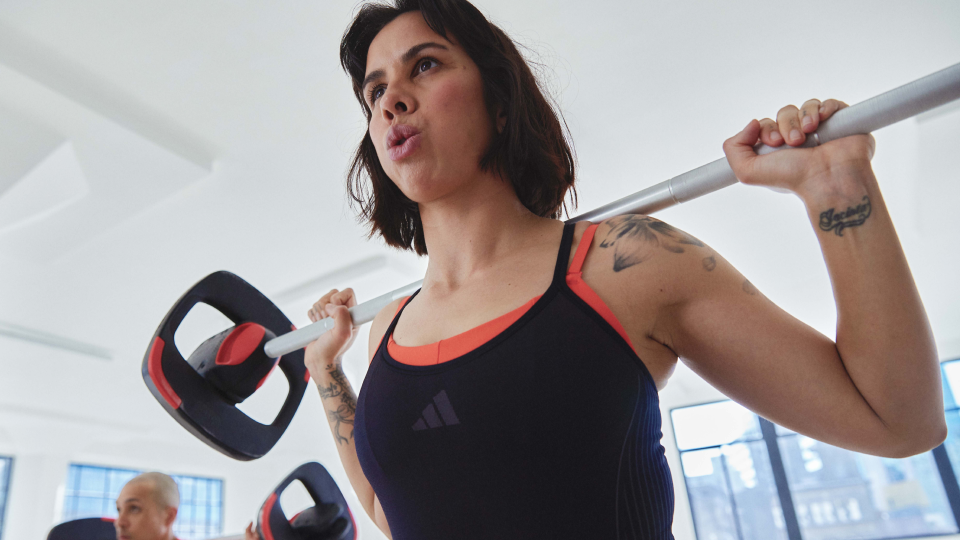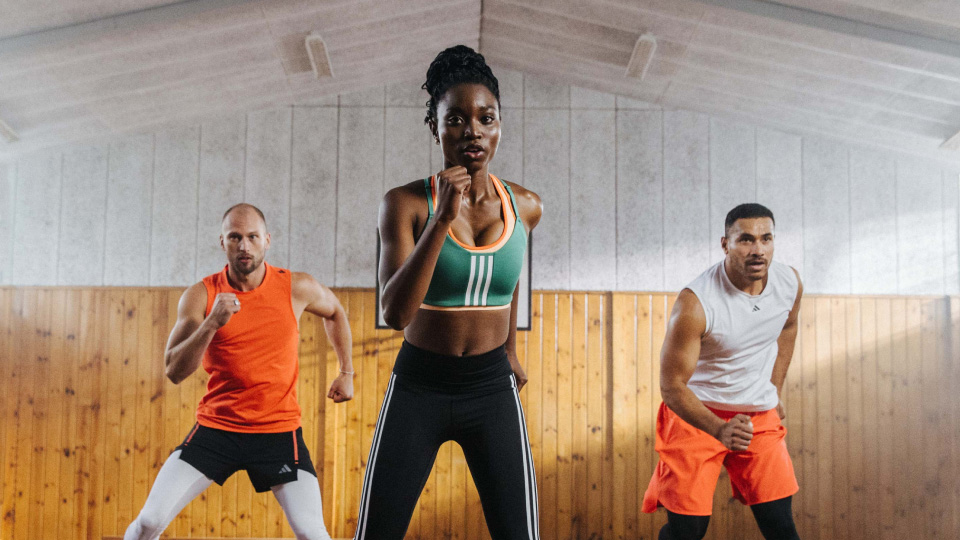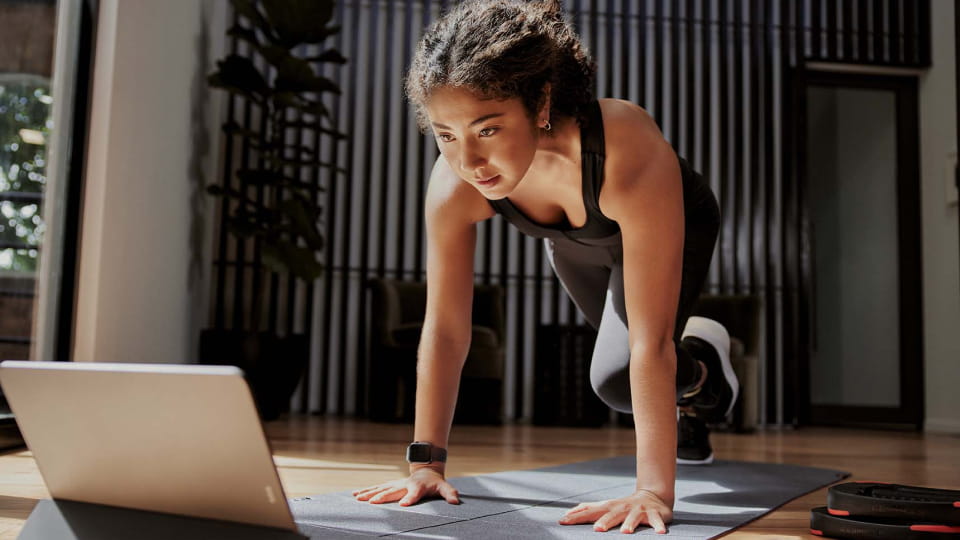“People will judge me”, “I don’t know what to wear”, “I don’t know how to use the equipment”, “I get overwhelmed”. While these may sound like common exercise excuses, they all stem from a very real issue that many of us face – gymtimidation.
According to a 2023 OnePoll survey, one in three Brits say feelings of intimidation (aka gymtimidation) are what’s holding them back from joining a gym. This is backed up by a 2019 OnePoll survey showing that 31% of Americans feel anxious about getting into shape and half of Americans consider working out in a gym a daunting prospect. Research shows it's typically women who experience higher levels of gym anxiety, many feeling self-conscious, plus lacking in confidence and knowledge.
If you can relate to feelings of trepidation at the thought of a gym session, clearly you’re not alone. The good news: there are simple steps that can help you get over gymtimidation for good.
1.Focus on yourself
Ironically, most people say they join the gym to improve their confidence levels. Yet, a good proportion (nearly 40%) say they avoid going to the gym because they feel self-conscious. If you want to kick self-consciousness to the curb, try not to think about those around you – most will be focused on their own workouts, not analyzing what you’re doing. Keep the adage ‘comparison is the thief of joy’ front of mind. If you focus on your own progress rather than comparing yourself to others, you’ll enjoy the best results – and feel better every step of the way.

2. Make yourself at home
Fitness industry expert, Dr. Paul Bedford, says feelings of gymtimidation can be heightened in certain environments. For some it may be in the cardio arena, others might not want to venture through the cycle studio doors, and many find lifting on the main gym floor particularly daunting. While you can choose to avoid training in triggering spaces, the better bet is to get familiar with them. Many clubs offer induction sessions or guided tours of the gym where a trainer will show different areas of the club and how to use the equipment. Once you’re familiar with the different settings, aim to visit them regularly so you feel at home. Personal Trainer and Group Fitness Instructor Sarah Shortt says don’t be afraid to walk around the gym like you own the place. “You’re paying your membership, so you have every right to be there as much as the next person! Nobody else knows your previous fitness experience, so act like the gym is your second home and this mindset will quickly translate into extra confidence.”
If you feel more comfortable with fewer people around, aim to visit the club during off-peak hours. Some gyms also offer women-only areas which can provide a level of comfort away from the main weights room.
3. Ask for advice
Don’t be afraid to ask gym staff for help – that’s what they’re there for! Gym-floor professionals will happily answer any questions and demonstrate how to use equipment. If you’re after more personal advice, consider investing in a PT session or two. This will help familiarize the equipment and get you started with a personalized workout routine.
4. Set goals and make a plan
Having realistic goals and a plan will help you train with purpose and direction. When you’re just starting out, the key is progress, not perfection. It might be running for 10 minutes without stopping, lifting a certain weight, or making time for consistent training. Whatever you’re aiming for, celebrate the small victories along the way – this will boost your confidence and help you feel more positive about your efforts. When you’re considering what movements to include in your workout, Sarah suggests thinking about the seven primal movement patterns: squat, hip hinge, lunge, push, pull, rotation, gait. To remain strong for everyday life, your program should include these types of movements. If you want more advice, a personal trainer will be able to set you up with a suitable plan.

5. Give group training a whirl
Choosing activities that blend social interaction and guided expertise are always fun – and great for building confidence. When you step into a group training studio, you can tap into the collective energy of many (science shows working out with a group drives satisfaction and the desire to come back for more). If a good instructor is leading the class, they will help you feel at ease without drawing any attention to your ‘newbie’ status. Simply follow the instructor’s guidance and you’ll get a great workout without having to make any decisions of your own.

6. Find your groove at home
Not sure about stepping into the studio? Trying out a digital workout at home can be a great way to learn the moves and build your confidence so you feel more comfortable when you give a live class a go. Research shows that when people do a digital workout, they feel significantly less self-conscious and worried about their performance than they do during a live workout. Another bonus is the fact that it’s very easy to tailor the intensity of a digital workout to suit how you feel on the day – so you’re more likely to enjoy your workout and be motivated for more.
WORK OUT AT HOME
Get more science-backed advice on how to make regular exercise a part of your routine.








